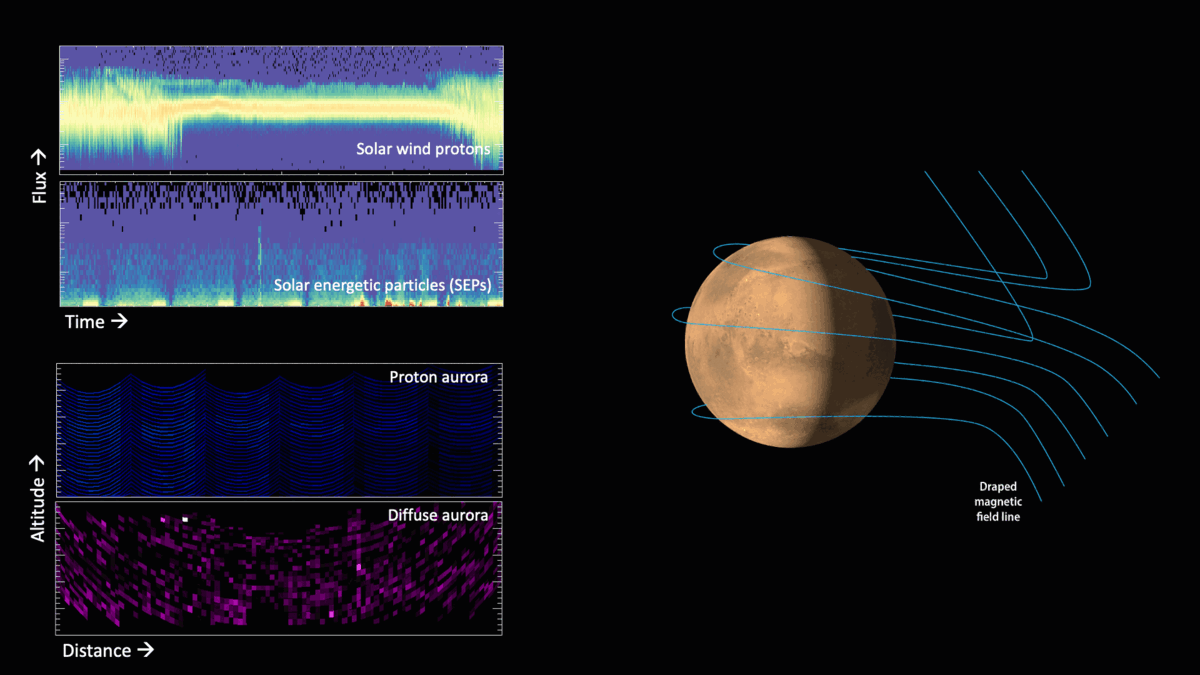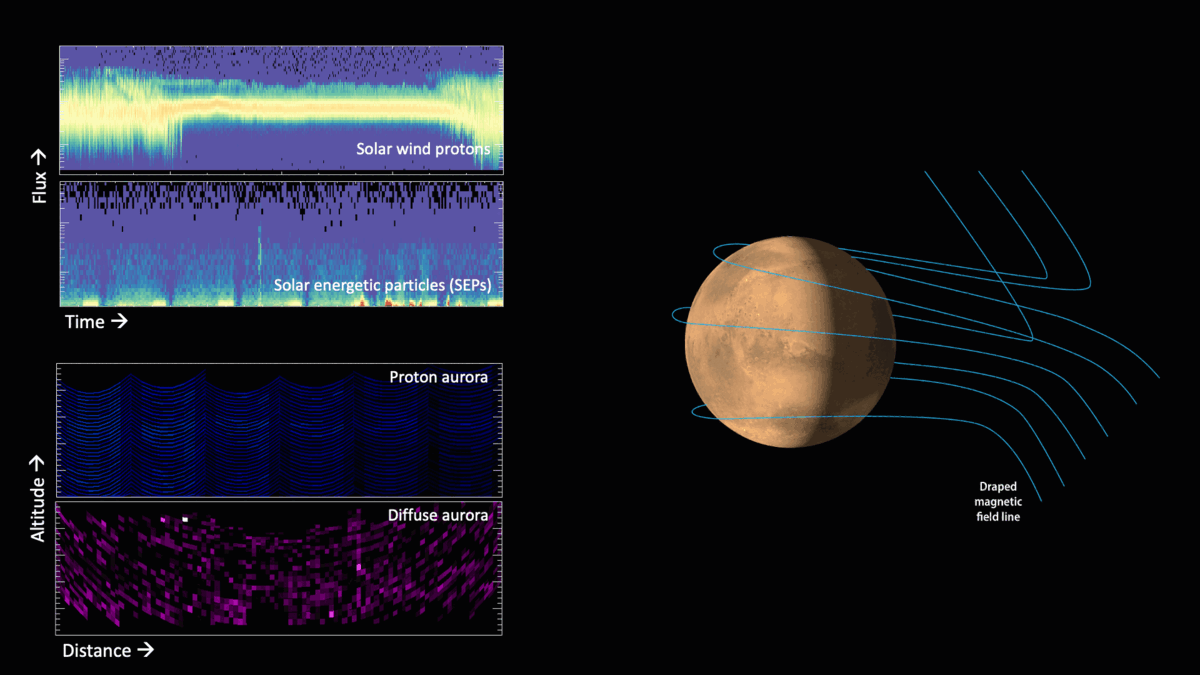MAVEN Observes Martian Light Show

November 9, 2022
| Credit | LASP/CU Boulder, UC Berkeley |
|---|---|
| Language |
|
Left column: From top to bottom, MAVEN data showing solar wind, solar energetic particles, proton aurora strength, diffuse aurora strength. On August 30th, a solar storm (a coronal mass ejection) impacted Mars and an increase in the solar inputs as well as the resulting two types of aurora can be clearly seen. Right column: a schematic of the solar wind on the dayside of Mars driving the proton aurora and the solar energetic particles on the nightside of Mars driving the diffuse aurora.

